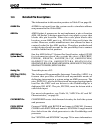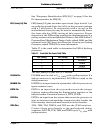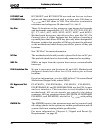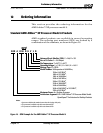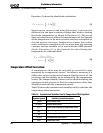
Chapter 11 Pin Descriptions 77
25175H—March 2003 AMD Athlon™ XP Processor Model 8 Data Sheet
Preliminary Information
See “Frequency Identification (FID[3:0])” on page 33 for the
DC characteristics for FID[3:0].
FSB_Sense[1:0] Pins FSB_Sense[1:0] pins are either open circuit (logic level of 1) or
are pulled to ground (logic level of 0) on the processor package
with a 1 kΩ resistor. In conjunction with a circuit on the
motherboard, these pins may be used to automatically detect
the front-side bus (FSB) setting of this processor. Proper
detection of the FSB setting requires the implementation of a
pull-up resistor on the motherboard. Refer to the AMD Athlon™
Processor-Based Motherboard Design Guide, order# 24363 and the
technical note FSB_Sense Auto Detection Circuitry for Desktop
Processors, order# TN26673 for more information.
Table 27 is the truth table to determine the FSB of desktop
processors.
The FSB_Sense[1:0] pins are 3.3-V tolerant.
FLUSH# Pin FLUSH# must be tied to V
CC_CORE
with a pullup resistor. If a
debug connector is implemented, FLUSH# is routed to the
debug connector.
IGNNE# Pin IGNNE# is an input from the system that tells the processor to
ignore numeric errors.
INIT# Pin INIT# is an input from the system that resets the integer
registers without affecting the floating-point registers or the
internal caches. Execution starts at 0_FFFF_FFF0h.
INTR Pin INTR is an input from the system that causes the processor to
start an interrupt acknowledge transaction that fetches the
8-bit interrupt vector and starts execution at that location.
JTAG Pins TCK, TMS, TDI, TRST#, and TDO are the JTAG interface.
Connect these pins directly to the motherboard debug
connector. Pull TDI, TCK, TMS, and TRST# up to V
CC_CORE
with
pullup resistors.
Table 27. Front-Side Bus Sense Truth Table
FSB_Sense[1] FSB_Sense[0] Bus Frequency
1 0 RESERVED
11 133 MHz
01 166 MHz
0 0 RESERVED








